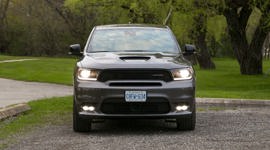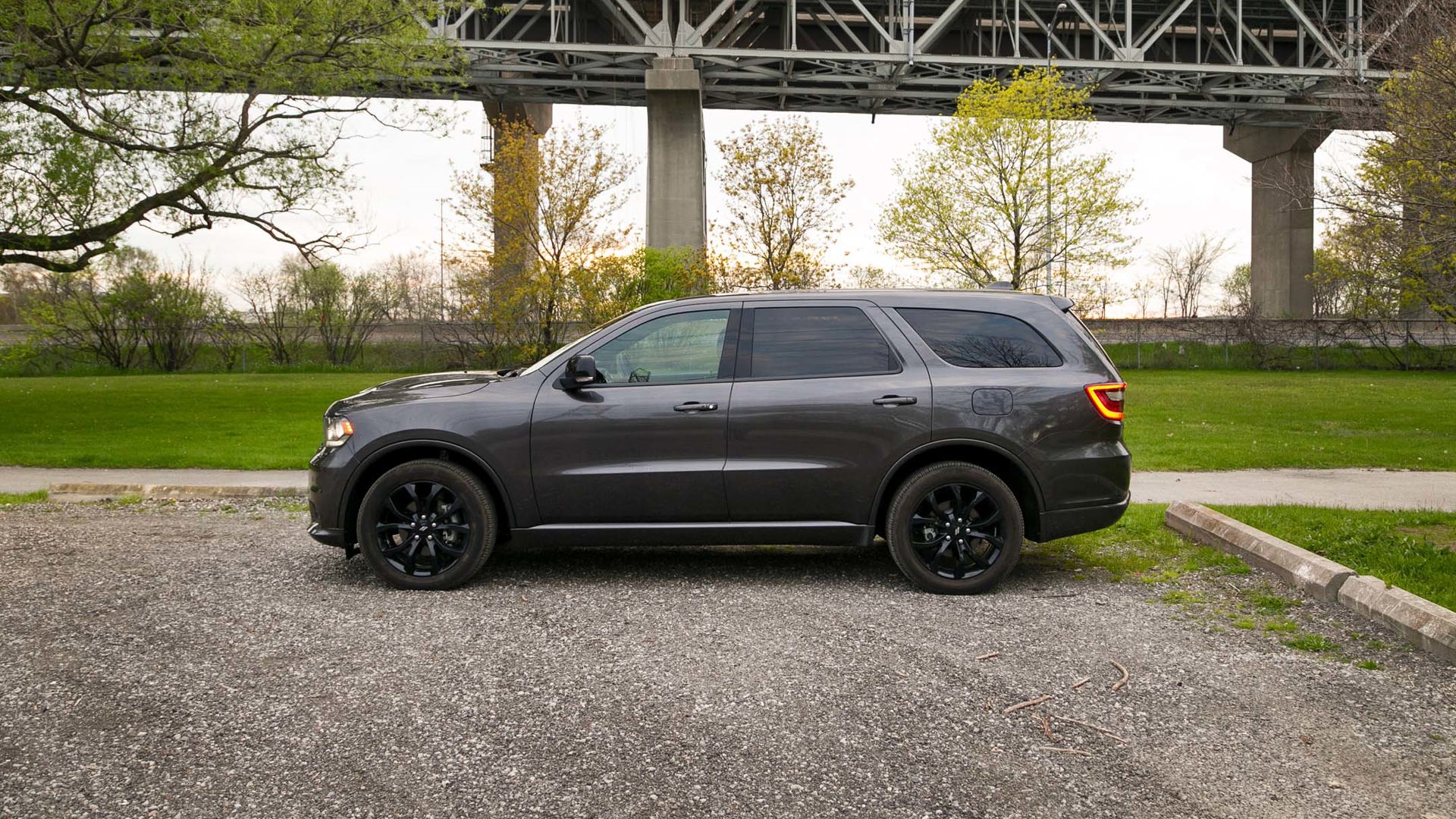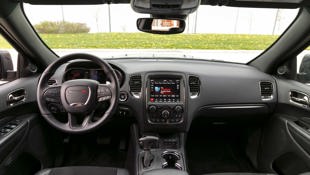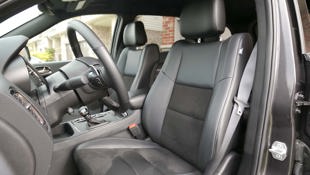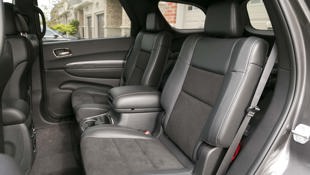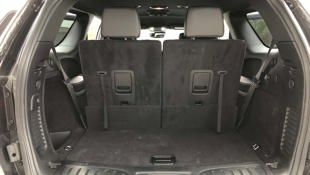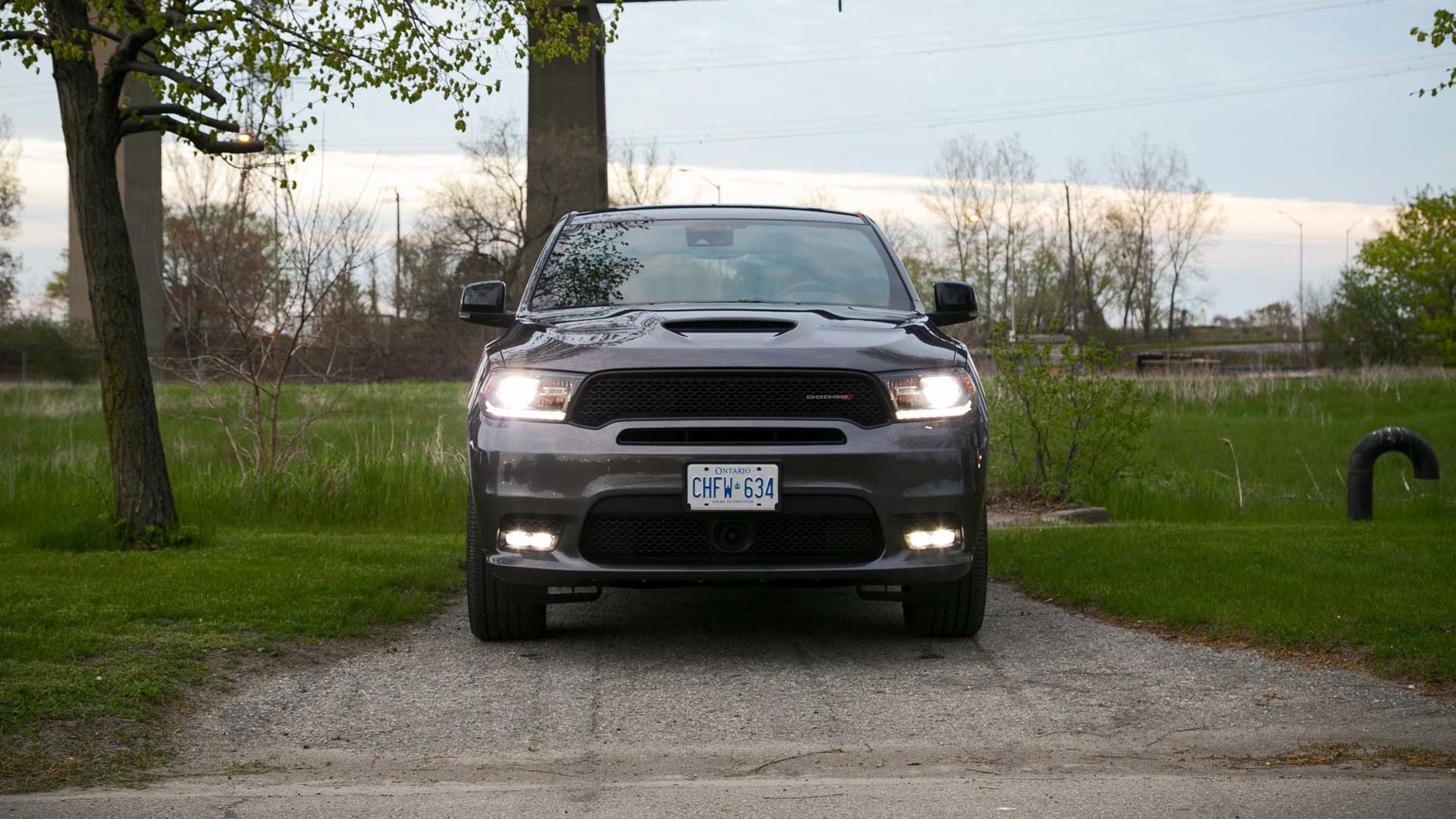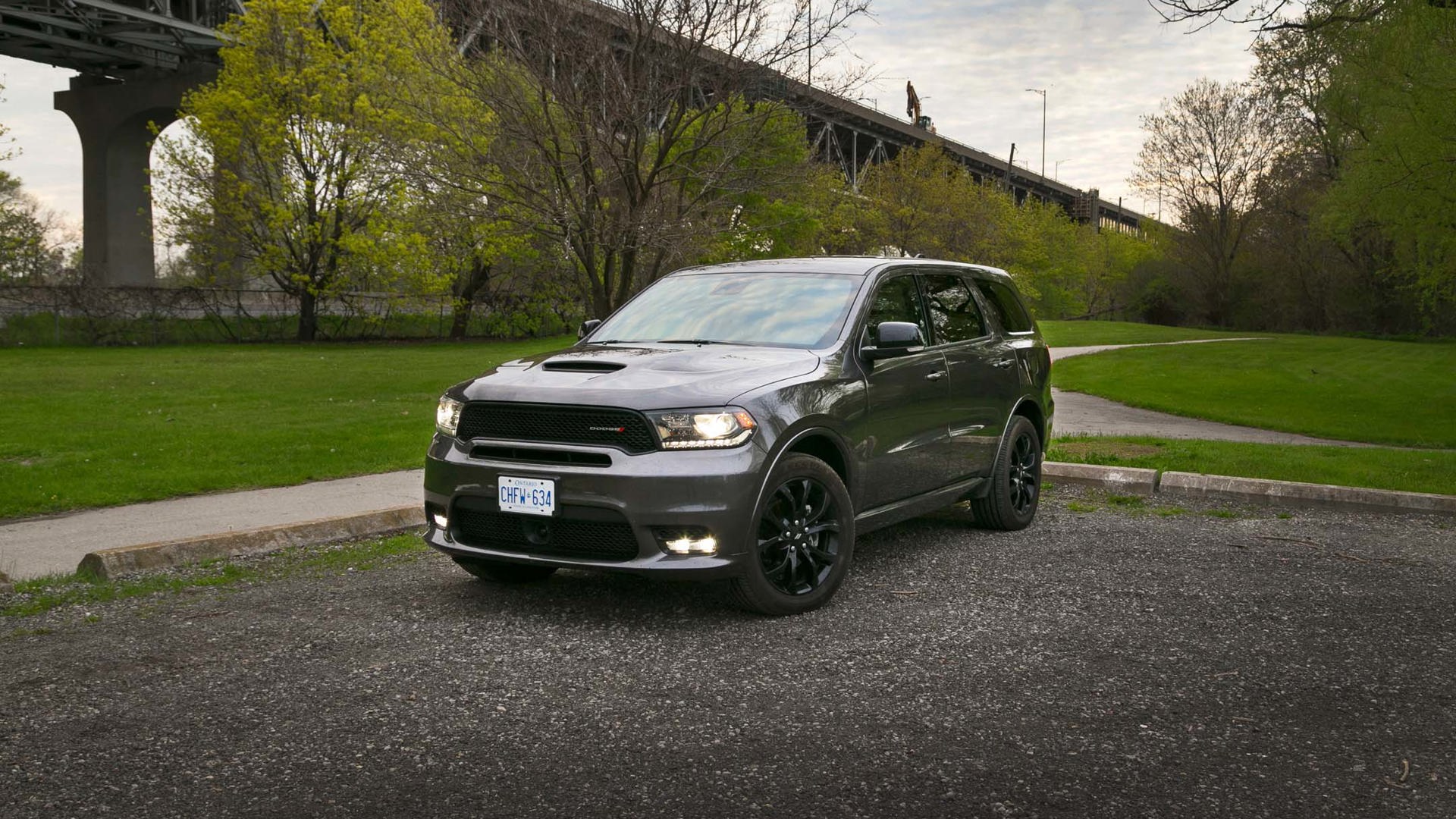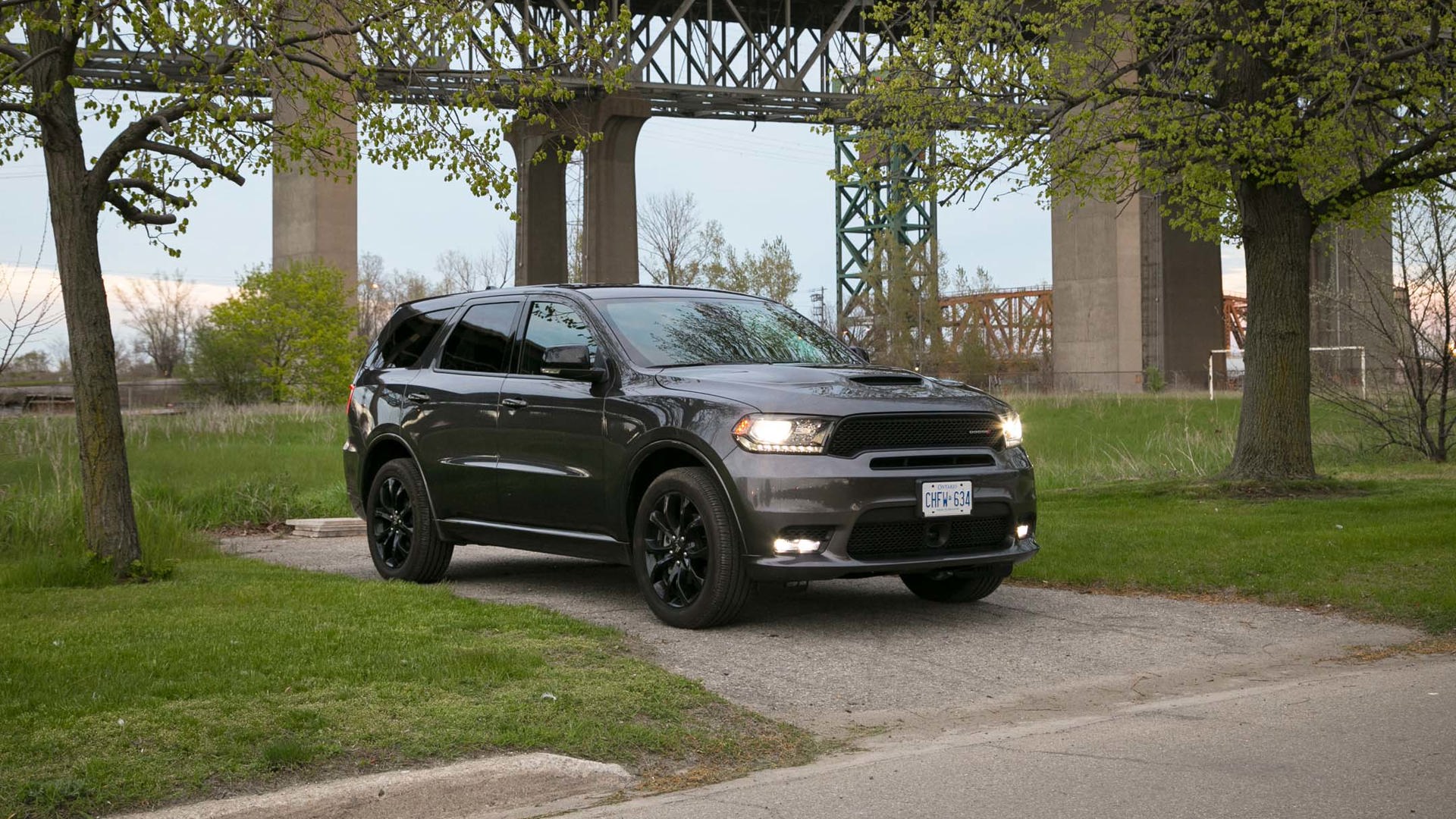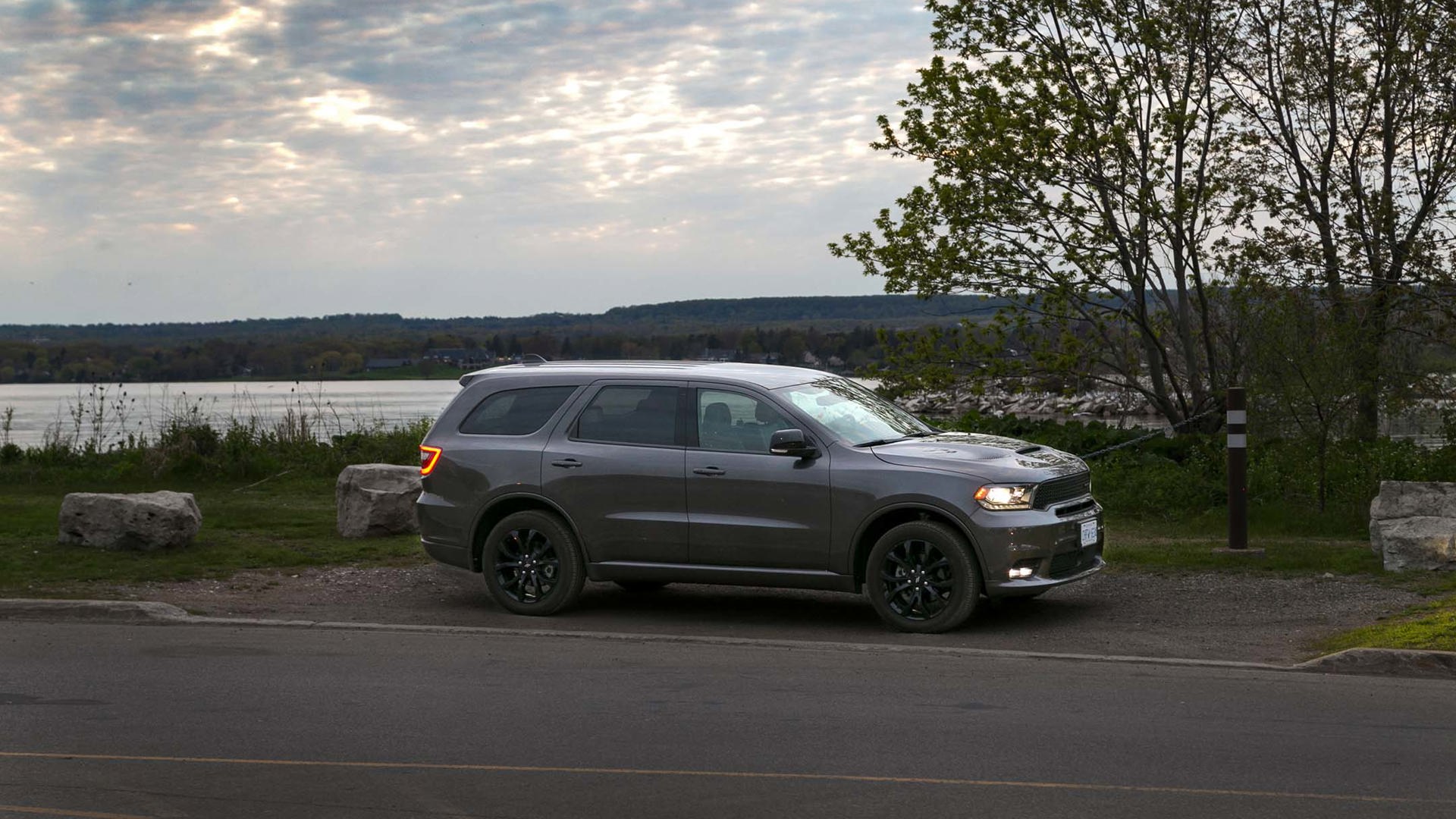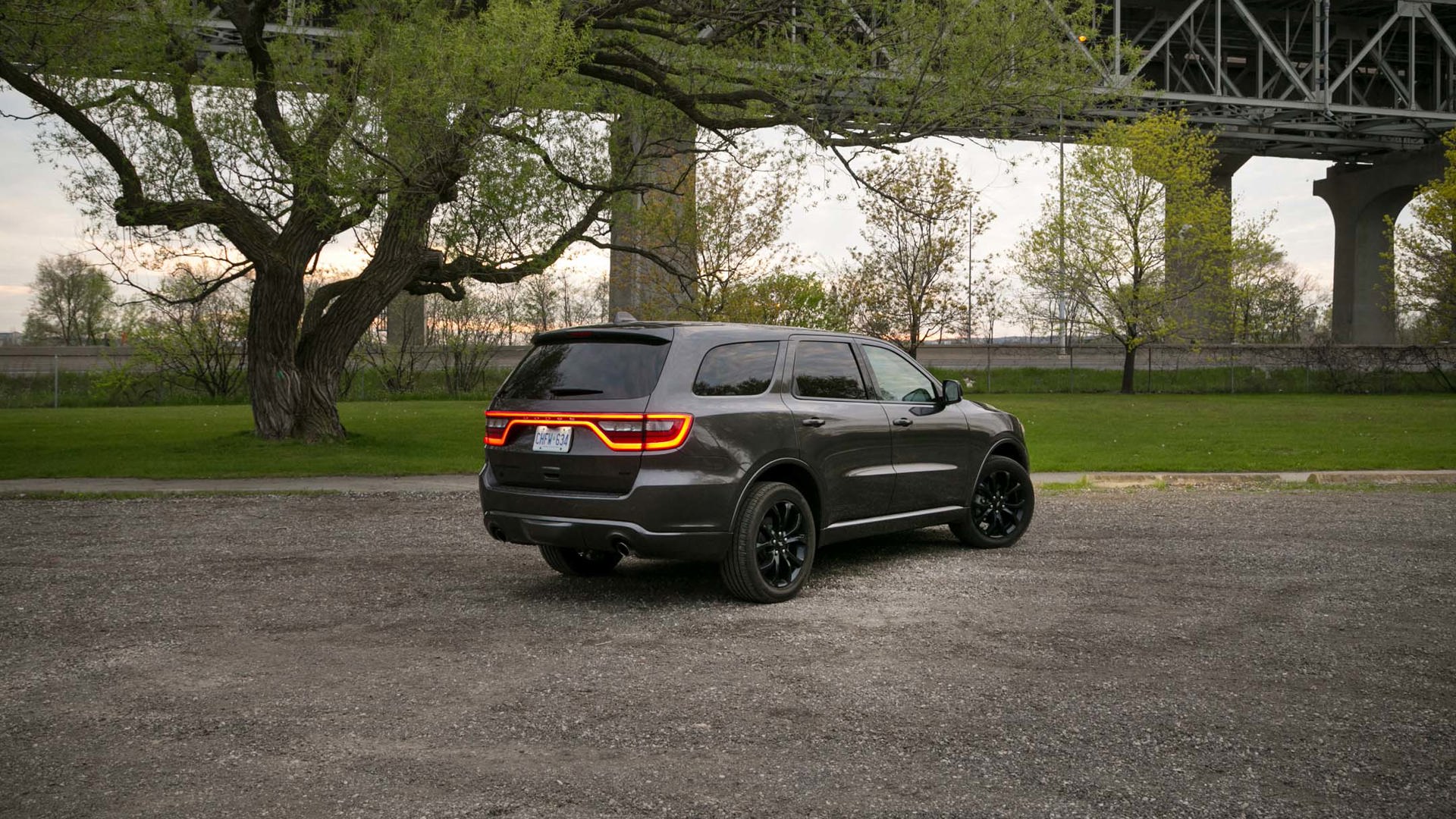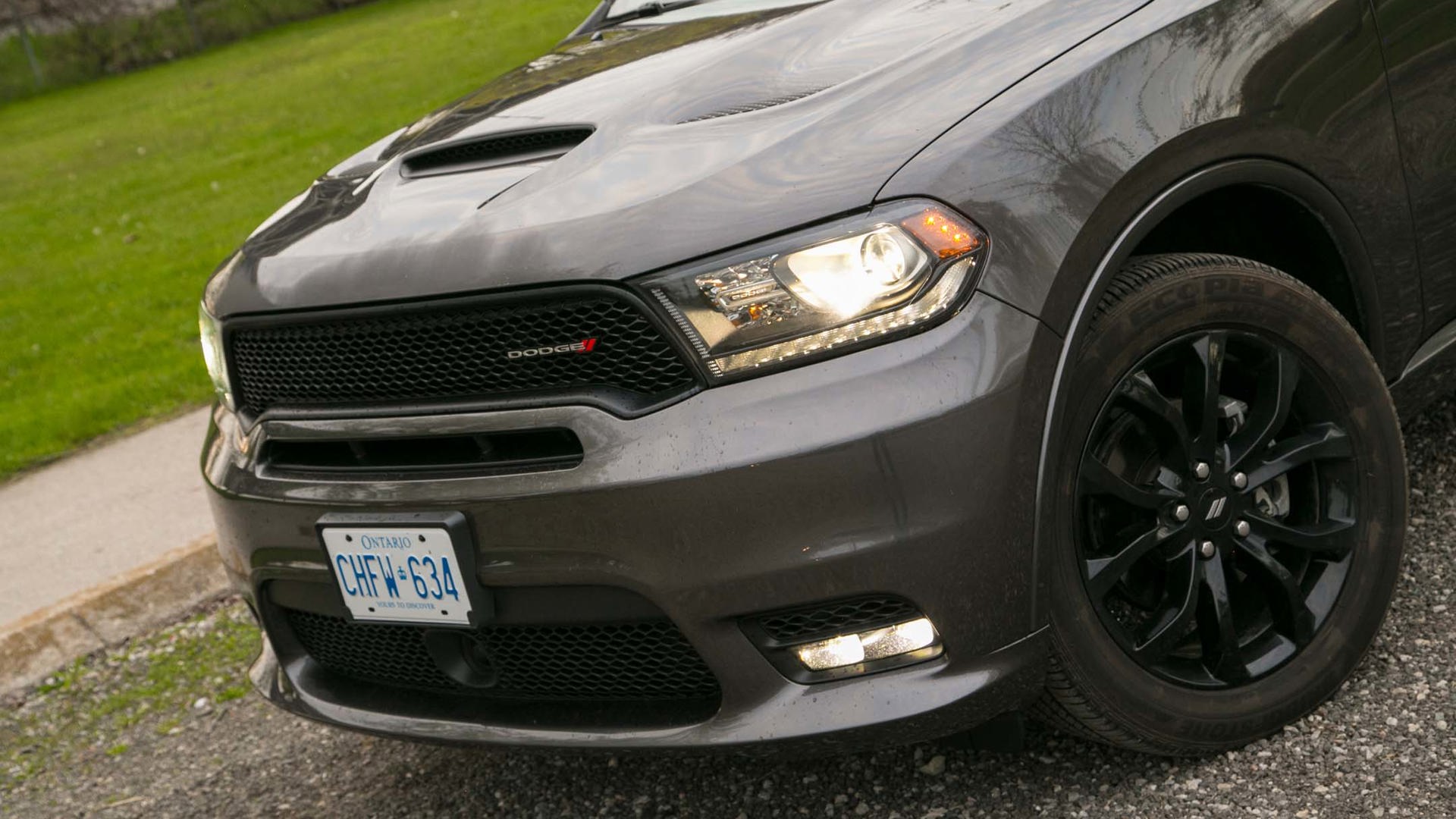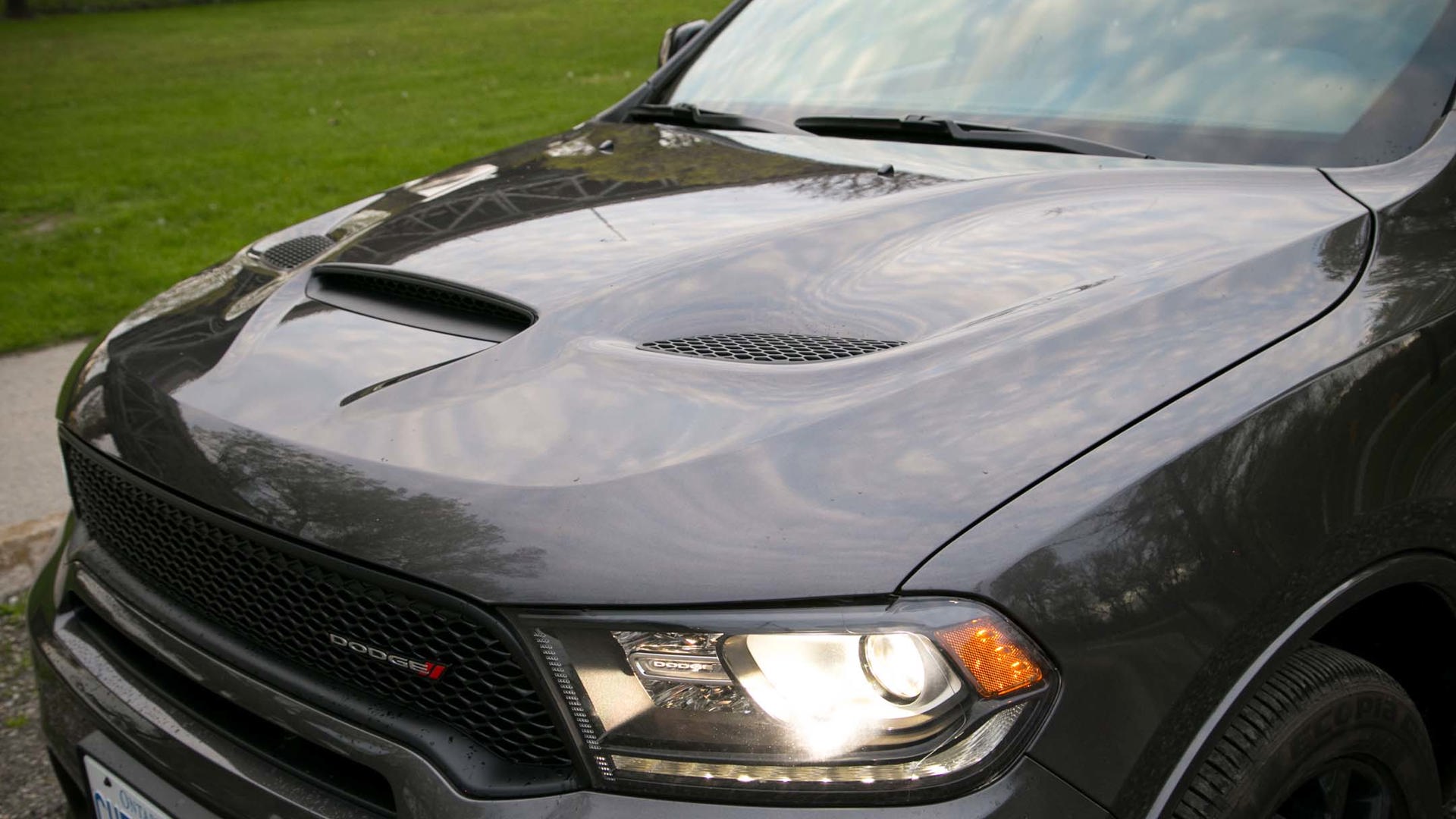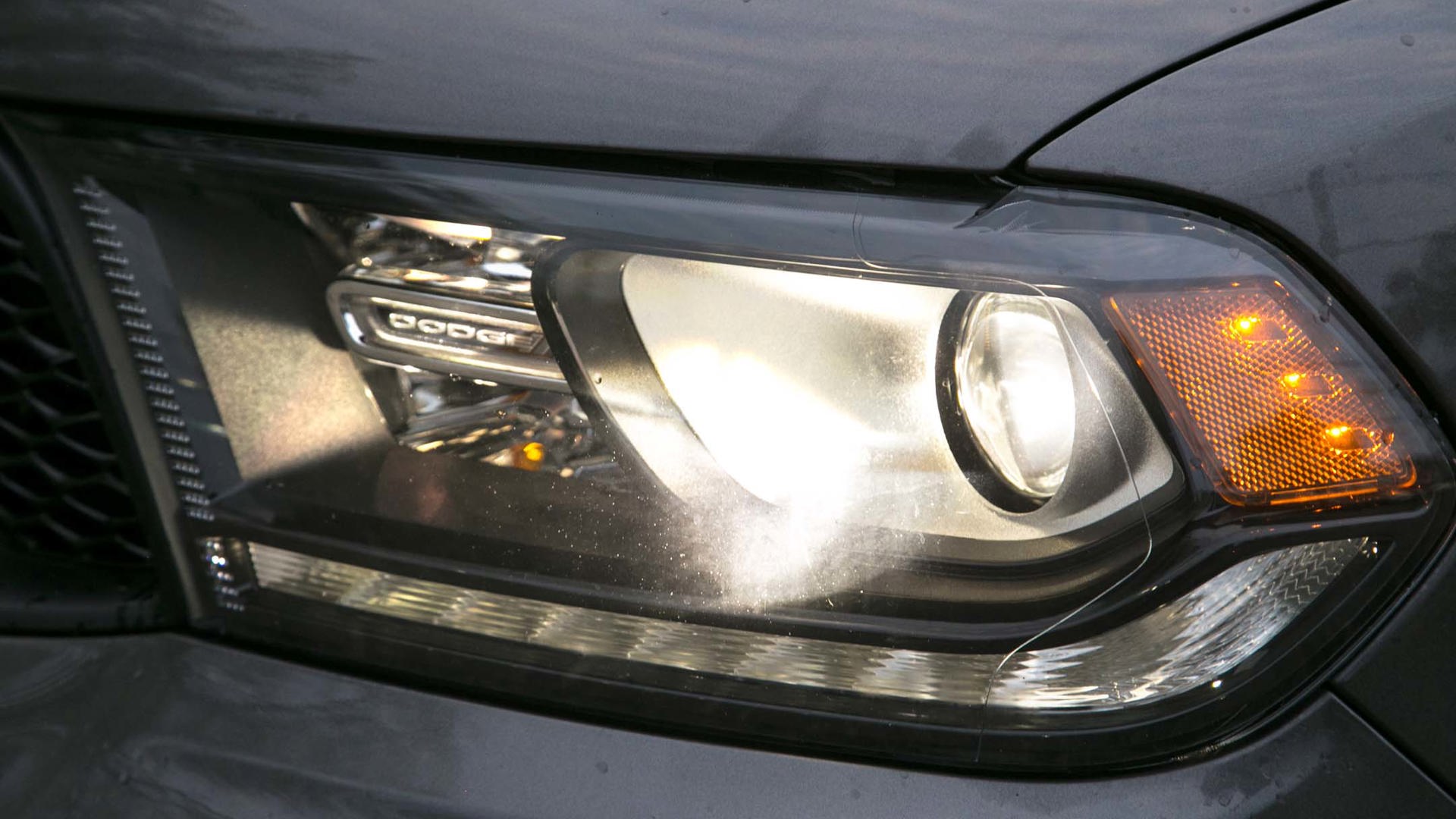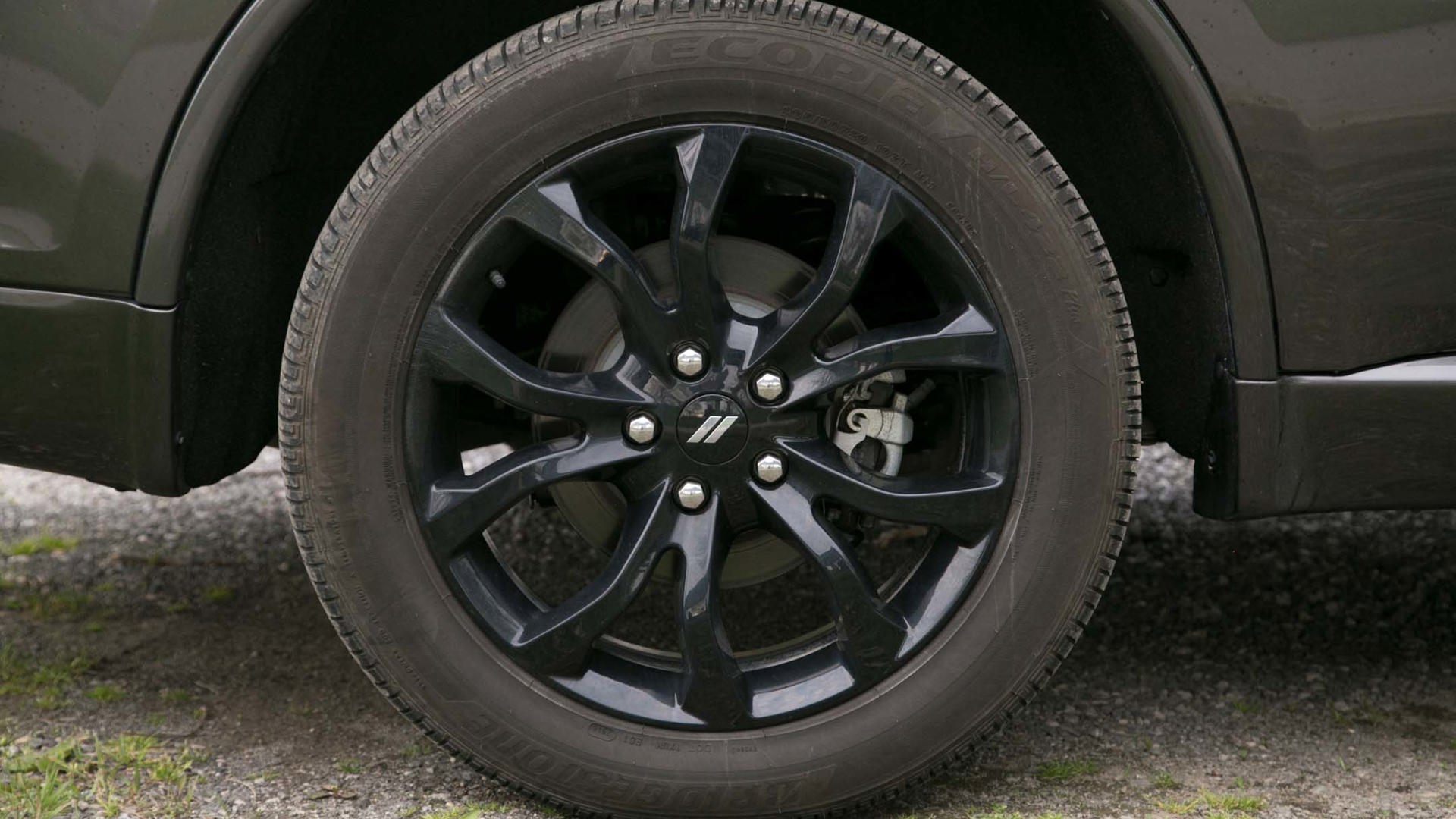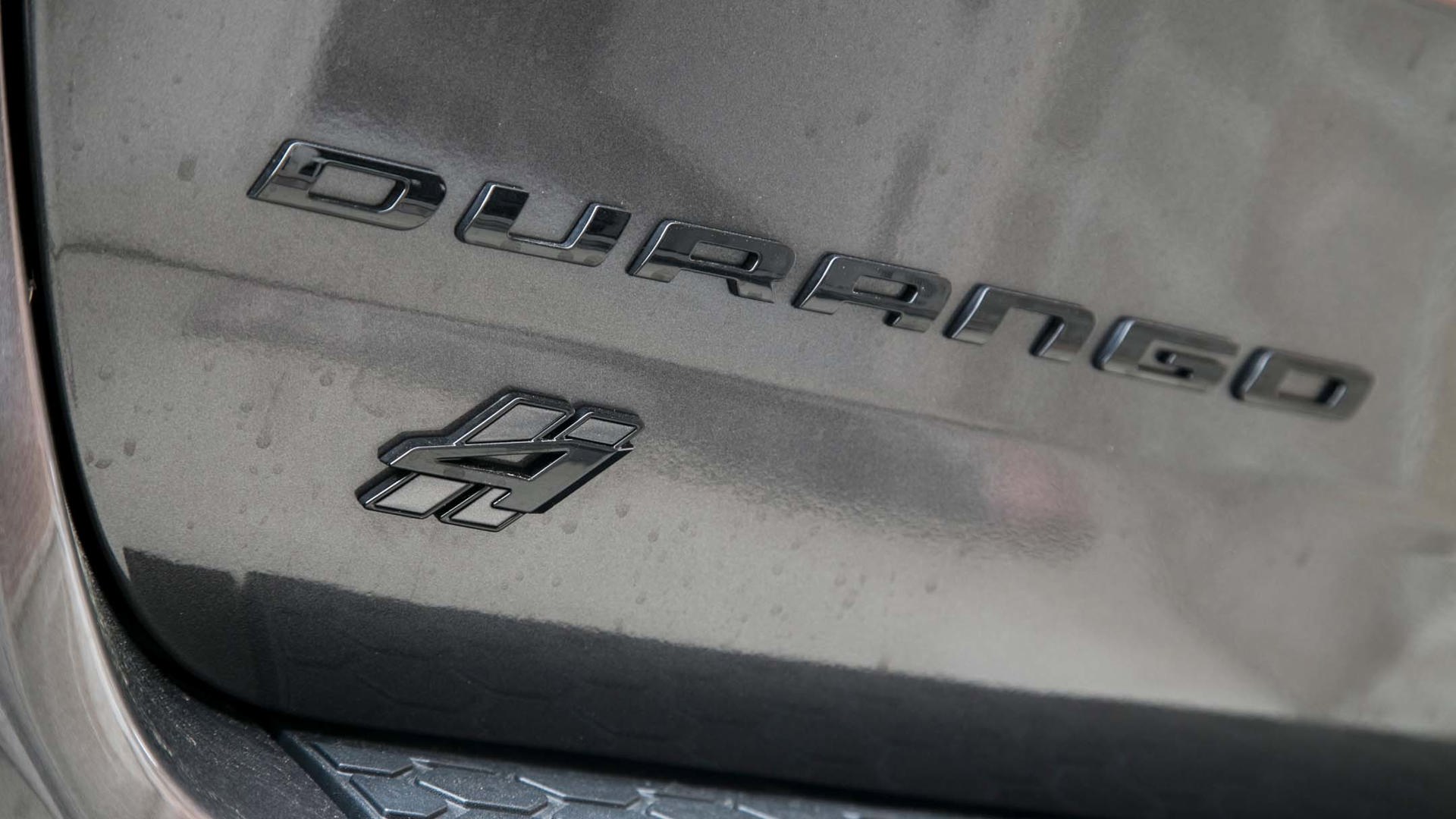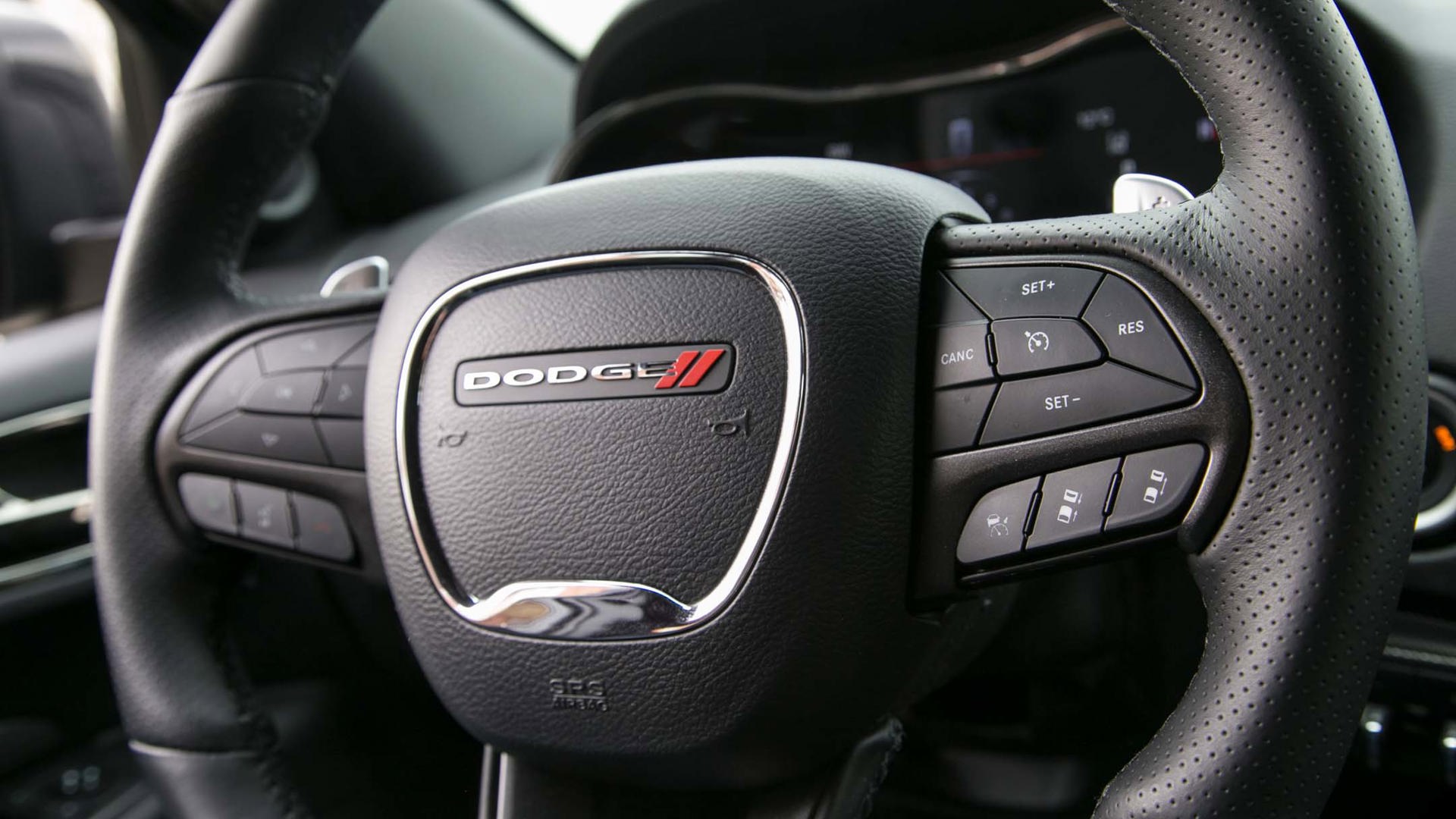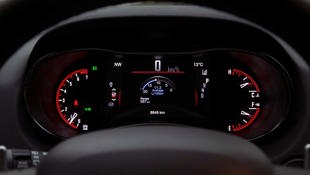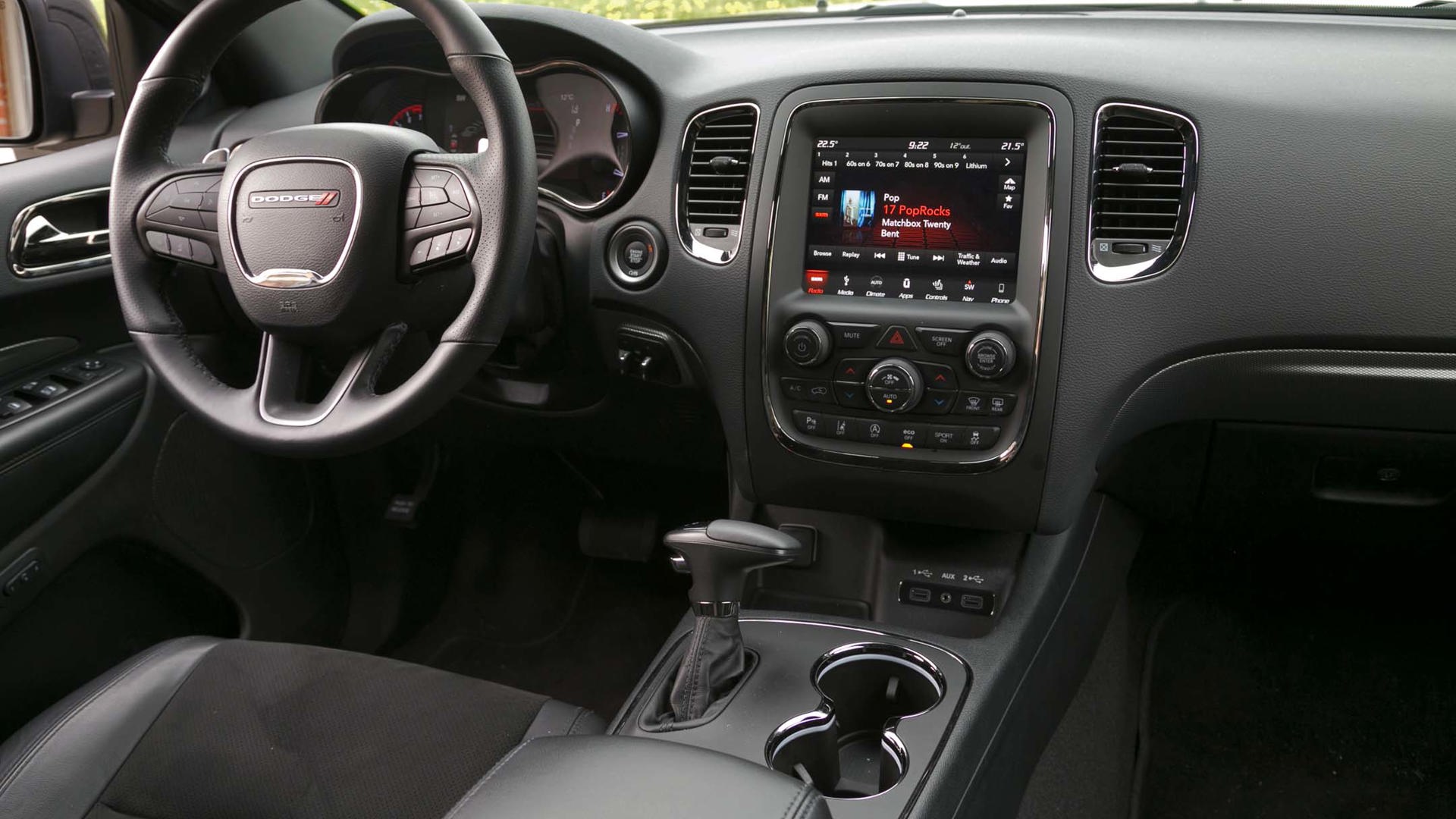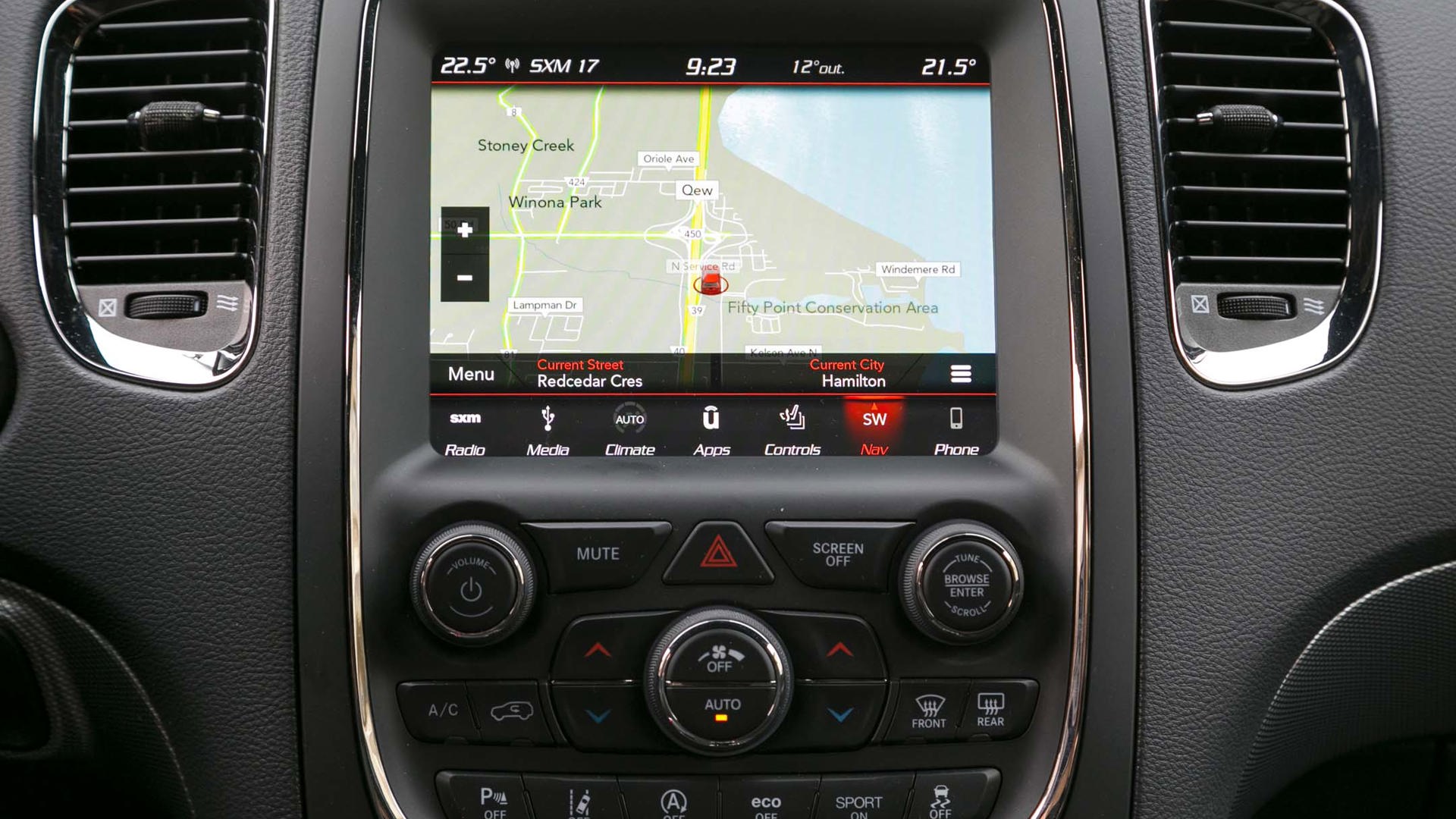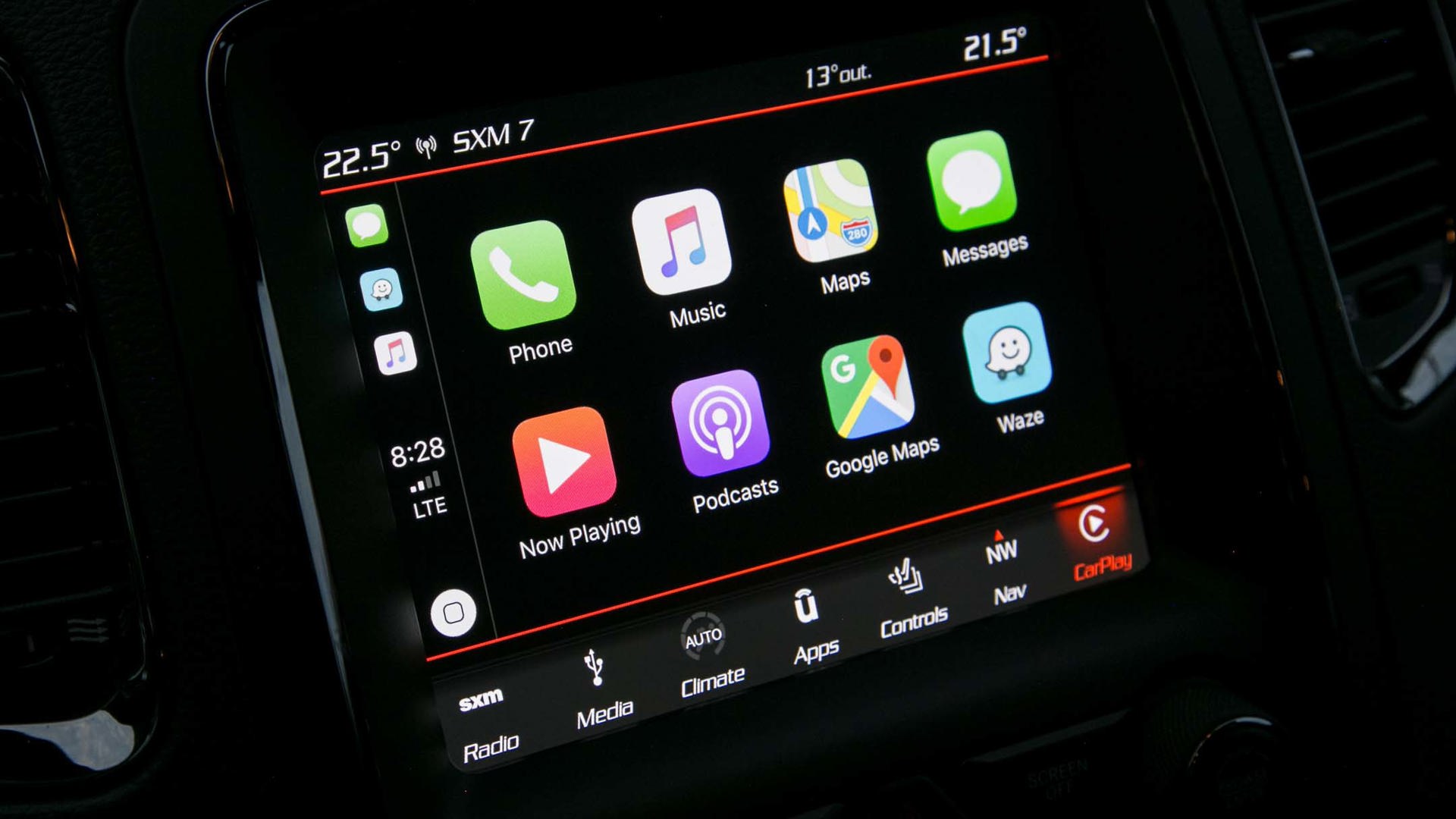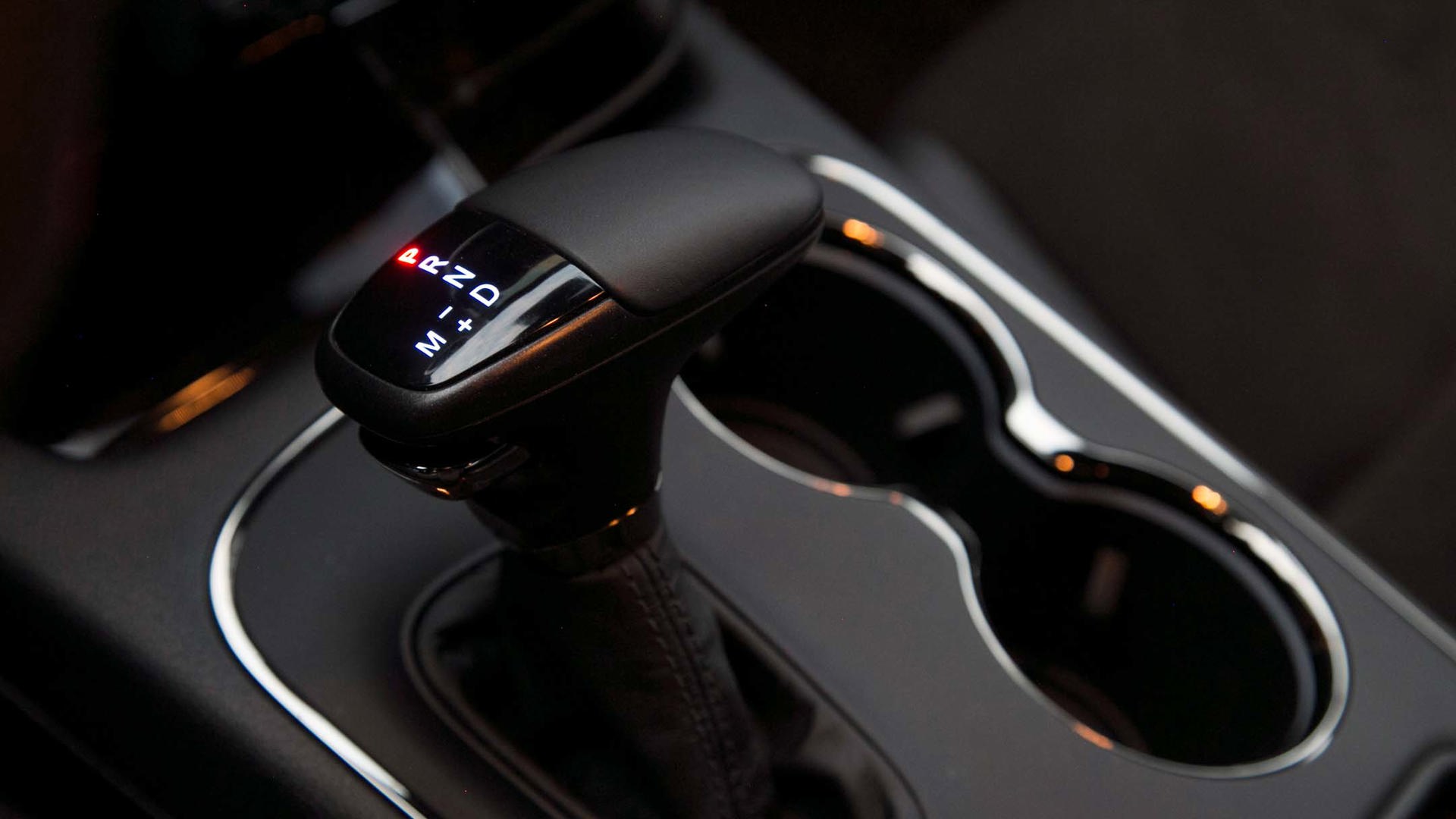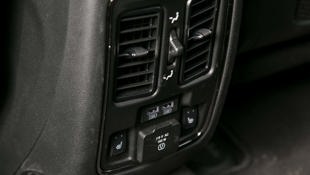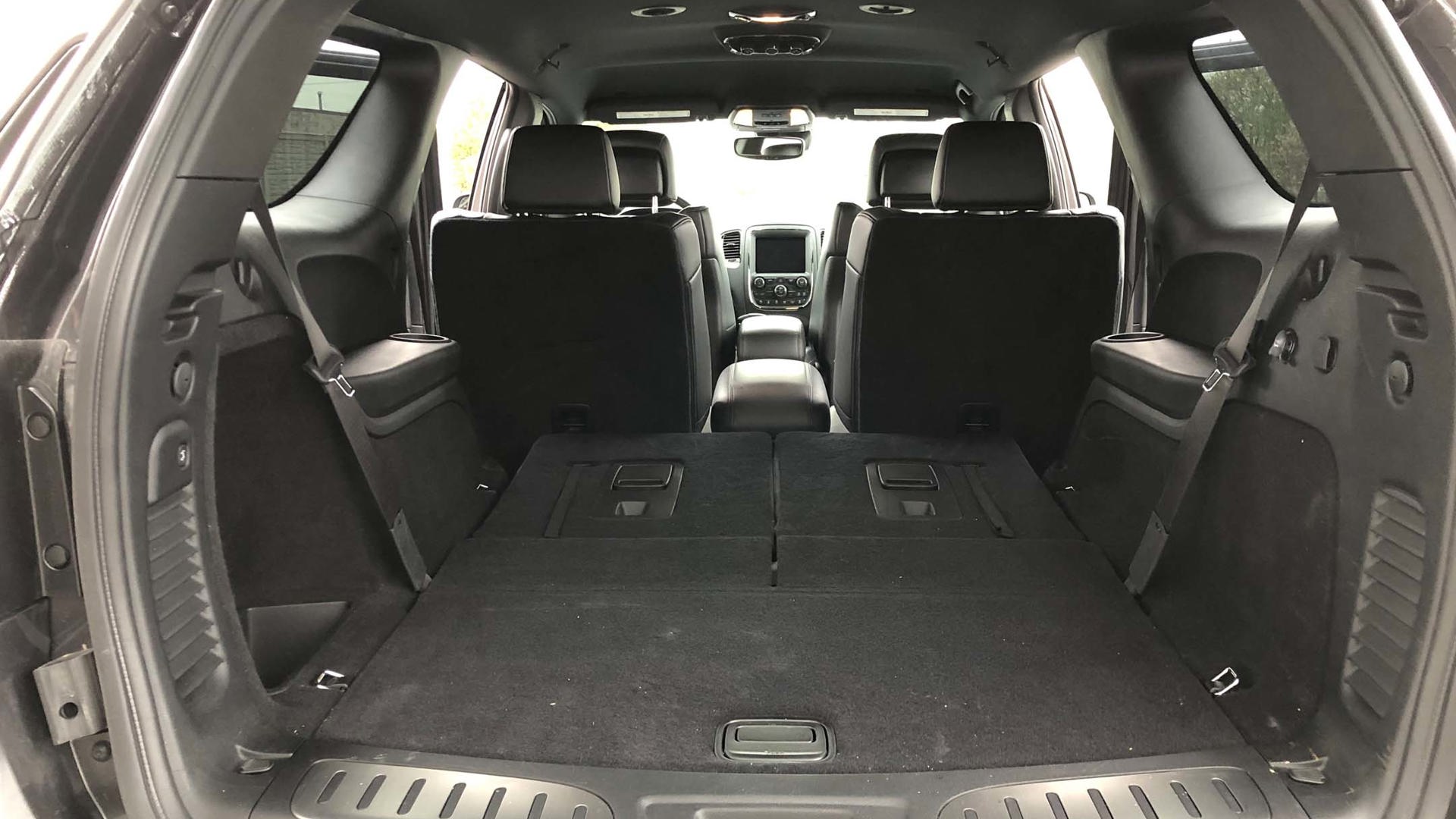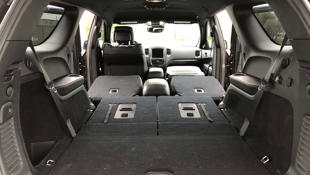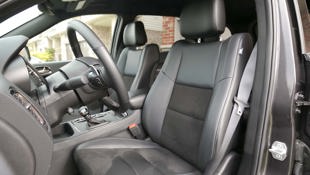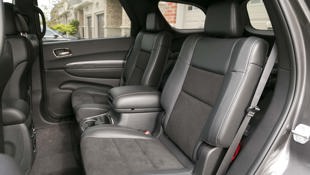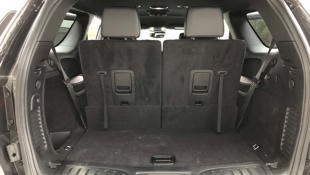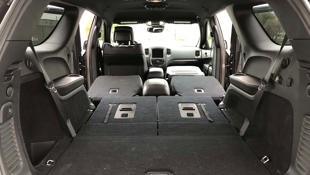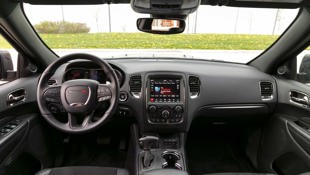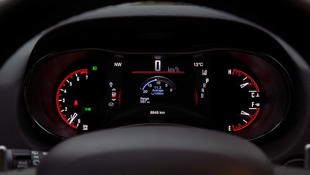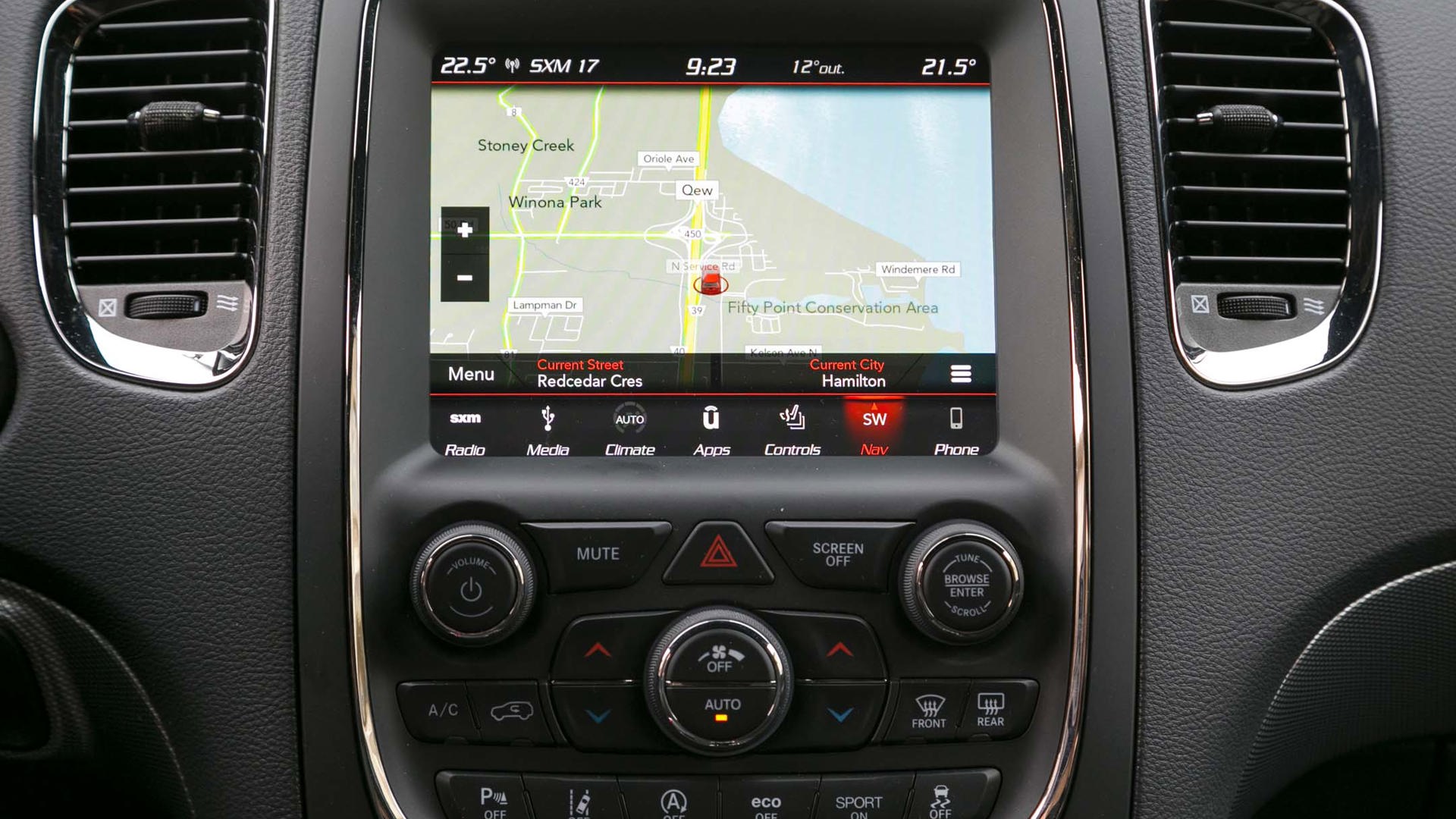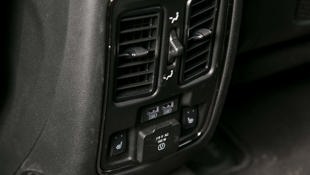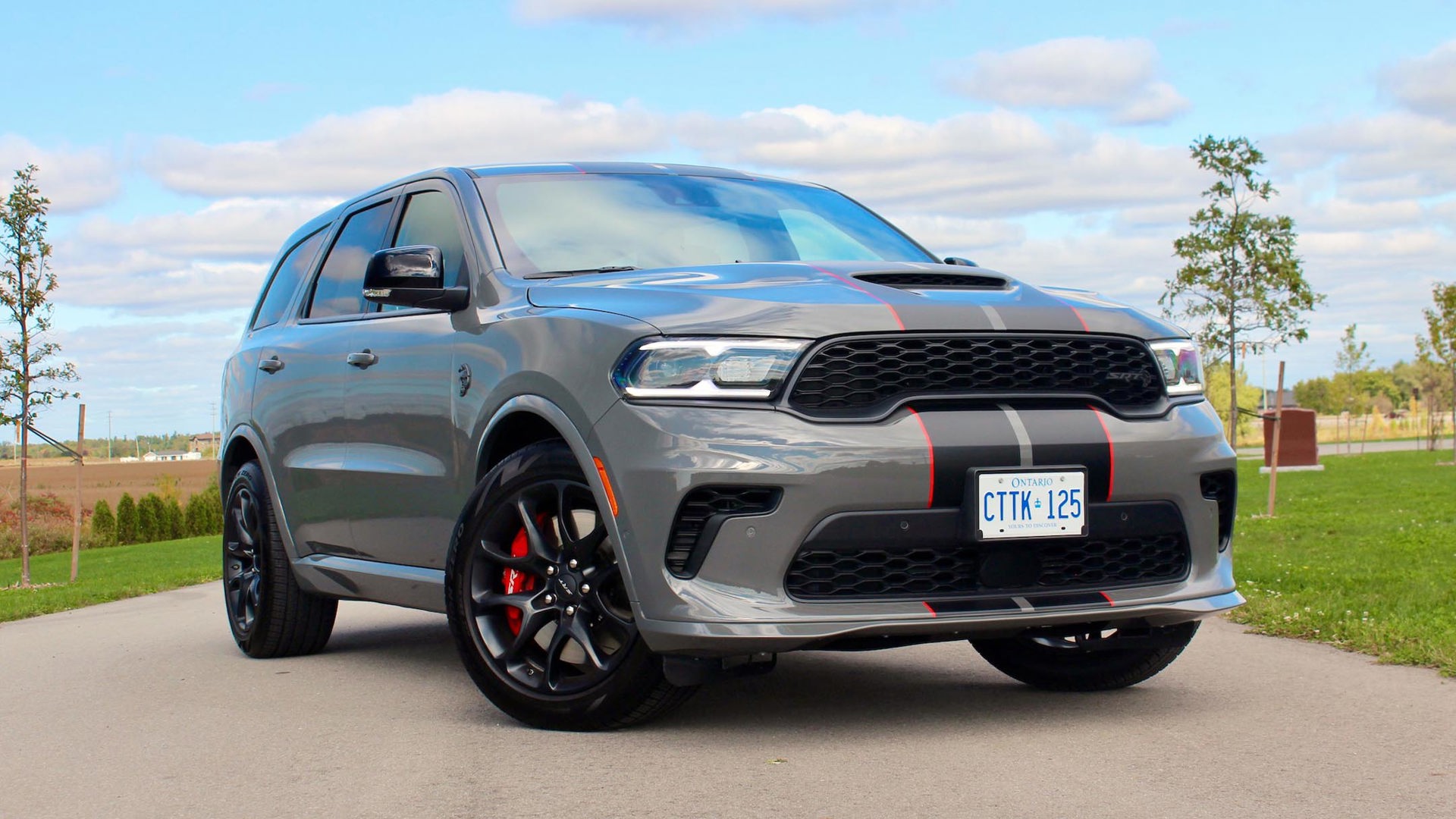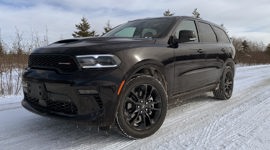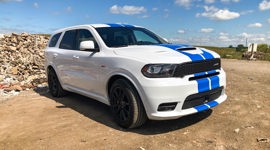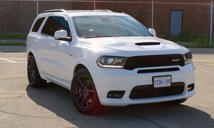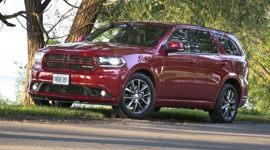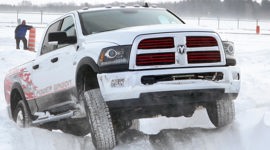 AutoTrader SCORE
AutoTrader SCORE
-
STYLING7/10
-
Safety7/10
-
PRACTICALITY8/10
-
USER-FRIENDLINESS7/10
-
FEATURES6/10
-
POWER7/10
-
COMFORT7/10
-
DRIVING FEEL5/10
-
FUEL ECONOMY7/10
-
VALUE6/10
I’ve been going to the same gym for several years now and while I should really go more often than I do, I have nevertheless noticed a number of regulars there. There are folks of all shapes and sizes, but a few stand out more than others, mostly because they’re trying so hard to be noticed.
Those characters are not unlike the 2019 Dodge Durango lineup: We’ve got the monstrous, bulging, muscle-bound guy that could bench press a Fiat 500; that’s the Durango SRT character. There’s the decently fit fella who wants to be noticed for his flashy, expensive workout clothes and shoes. He’s like the Durango Citadel. The third type is the one who’s not all that muscular, but chooses to wear a shirt a size too small, and spends more time flexing in the mirror than actually lifting weights. That guy is like this Durango GT test truck.
Styling: 7.5/10
The Durango stands out in a class of generally bland three-row crossover sport-utility vehicles. Even the entry-level SXT trim looks bold and truck-like (that’s a compliment), but my GT-trim tester is styled to resemble the SRT version with its ludicrous 475 hp V8. Honestly, it looks seriously bad-ass with the blacked-out trim and wheels, meshy grille, and scooped and scalloped hood.
Other manufacturers have jumped on the black-out-all-the-trim bandwagon too, but nobody else is making their ’utes look as wild as this, except for maybe the Durango’s Jeep Grand Cherokee cousin.
Inside, the Durango’s age is evident (it’s now the eighth year of this third generation), with expanses of cheap-looking plastics and a design that’s a generation, or two, old.
User Friendliness: 7.5/10
Despite its age – or perhaps thanks to it – the Durango’s interior is quite functional. Audio controls have large, easy-to-use knobs and buttons, as does the climate control system.
Several secondary controls, like the lane-departure mitigation function, have their own buttons too, but if you want to switch on the heated seats or steering wheel, you’ll need to dive into a few menus on the infotainment system.
FCA got their Uconnect infotainment system right a few years ago with an 8.4-inch touchscreen and a straightforward menu system that creates minimal distraction for the driver, and for the most part, it has aged well. That said, its back-up camera has pretty pitiful resolution, resulting in a muddy image on-screen.
Features: 6/10
Our Durango had the upgraded Uconnect system with navigation, satellite radio, and even on-board Wi-Fi hotspot. The audio system provides decent sound, though it tends to be tuned more for bass than clarity.
Otherwise, besides the automatic high-beam control on the headlights, there’s very little content to justify the $60,000 cost of this rig. Instead, the option sheet is heavy with items like a “Performance Hood” ($995) and the “Blacktop Package” that features mostly black badging and some 20-inch wheels for two-grand. There’s no sunroof, but there are plenty of power plugs and USB ports for charging things.
Comfort: 7/10
The electrically adjustable front seats are heated (as is the steering wheel), and covered in faux-suede material, and provide decent comfort. The second-row seats in our tester were a pair of optional captain’s chairs (also heated), with a large console unit fitted between them.
The third row is tricky to access, and once back there, the space is adequate for small adults or children, as is typical of most mid-size SUVs.
Separate climate controls are mounted on the ceiling for the rear-seat occupants.
Practicality: 8/10
While the space behind the third-row seats is small compared to many of the Durango’s competitors, once they – and the second-row captain’s chairs – are folded flat, there’s a cargo hold offering nearly 2,400 L of space. The front passenger seat even folds flat forward, enabling the loading of really long items that can stretch all the way from the liftgate to the dashboard.
What’s more, the $825 Trailer Tow option package provides a Class IV hitch, wiring harness, heavy-duty engine cooling, trailer brake controller and a rear load-levelling suspension. Combined, this gives the Durango an impressive 2,812 kg (6,200 lb) tow rating, exceeding its competitors.
Safety: 7/10
Dodge offers the collection of safety features we’ve come to expect on most modern vehicles (forward collision warning and active braking, adaptive cruise control, rain-sensing wipers, and blind-spot / rear cross-traffic detection), but these items are all parts of various option packages that will add a few thousand bucks to the bottom line. The Durango’s competitors from Toyota (Highlander) and Honda (Pilot) commendably include these functions as standard equipment even on the base model trims.
Power: 7.5/10
As a driving enthusiast, it’s easy to bemoan a Durango fitted with the 3.6L V6 as our tester was, if only for knowing that a Durango R/T with the Hemi V8 could be had for the same cost, if a few of the superfluous options were skipped. Those with more common sense than your humble reviewer would be quick to point out that the Pentastar V6 in our tester is a highly regarded engine with a very competitive output of 295 horsepower and 260 lb-ft of torque.
The V6 does a fine job of motivating the Durango, even if it does weigh in at nearly 2,300 kg – rather portly for this class. It doesn’t even sound half-bad doing it, and generally speaking the eight-speed automatic is a good companion, with quick, but smooth reactions. But the Hemi V8 just suits the image of the Durango so well.
Driving Feel: 5.5/10
While no larger than most mid-size SUVs, the Durango is notably heavier, and that mass is apparent when driving. The big Dodge gets the handling job done suitably for its size and weight, but never feels all that composed doing so. What’s more, the sporty-looking 20-inch wheels make for some serious jolts being transmitted into the cabin when driving over bumps and potholes.
More concerning is the way the throttle is calibrated to be quite touchy starting from a stop. That, combined with a bit of a hobby-horsing motion from the suspension, and the sun beating in on my nine-year-old son while we oozed through Toronto traffic, resulted in a nasty bout of carsickness for my little guy – something that hasn’t afflicted him to that degree in any other vehicle. We can probably, mostly chalk this up to the sun beating in on him, but if you’ve got young ones prone to the car-queasies, maybe spend a bit of extra time on the test drive to ensure the Durango is the right fit for the whole family.
Fuel Economy: 7/10
A significant upside to selecting the V6 over the burlier V8 in the Durango, is its impressive efficiency. While not the best in the class, the Durango is surprisingly frugal, netting a combined average of 11.3 L/100 km. The Durango puts its auto stop–start feature to good effect here too.
Just as notable is the Durango’s 93-litre fuel tank, which is 20 litres greater than the similarly efficient Honda Pilot. This gives the Dodge a satisfying touring range per tank, and when it is time to refill, only 87-octane is required.
Value: 6/10
The Durango GT’s base price is just over $50,000. That’s not an insignificant amount, but that’s not uncommon in the mid-size SUV class. Being forced to spend thousands more to get safety features that are standard on many vehicles costing half what the Durango does, however, calls value into question. Despite being a similarly old design, the Ford Explorer I recently reviewed was priced very similarly to this Durango, yet felt significantly more refined and posh.
Conclusion
The Durango GT, especially optioned up in macho-looking trim and hood, is far more bravado than brute strength. It’s the SUV equivalent of a muscle shirt, stretched over a dad bod. Nothing wrong with that, but hey, there are more muscular versions. When measured against its peers, only those appreciating its style or towing capacity are likely to see the value in this choice versus other three-row SUVs in the class.
| Engine Displacement | 3.6L |
|---|---|
| Engine Cylinders | V6 |
| Peak Horsepower | 295 hp @ 6,400 rpm |
| Peak Torque | 260 lb-ft @ 4,000 rpm |
| Fuel Economy | 12.7/9.6/11.3 L/100 cty/hwy/cmb |
| Cargo Space | 487 / 1,351 / 2,393 L behind 3rd/2nd/1st row |
| Model Tested | 2019 Dodge Durango GT AWD |
| Base Price | $50,145 |
| A/C Tax | $100 |
| Destination Fee | $1,895 |
| Price as Tested | $60,495 |
|
Optional Equipment
$8,355 – Crystal Granite paint $245; Technology Group $950; Blacktop Package $1,995; Trailer Tow Group IV $825; Safety/Security & Convenience Group $1,000; 2nd-row fold/tumble captain’s chairs $600; 2nd-row console arm-rest $250; Uconnect 4C nav with 8.4-inch display $995; Blind-spot Cross-Path Detection $500; Performance Hood $995
|
|
